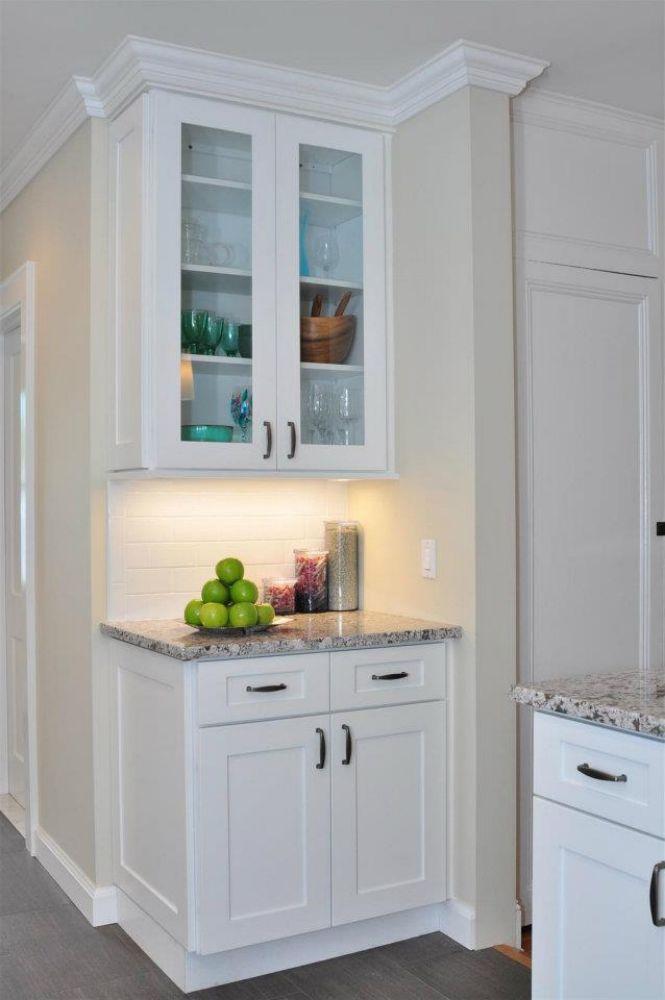Understanding The Materials Behind Forevermark Petit Sand Cabinets
When shopping for kitchen cabinetry, one of the most common questions homeowners ask is whether the cabinets are made from solid wood, MDF (Medium-Density Fiberboard), or a combination of both. Forevermark Petit Sand cabinets, known for their soft neutral tone and sleek finish, have gained popularity for their balance of affordability, durability, and design appeal. Understanding what materials go into their construction is essential, as it impacts not only their appearance but also their longevity and maintenance requirements.
Forevermark as a brand is committed to offering cabinetry that is functional, beautiful, and environmentally friendly. While many assume that all high-quality cabinets are built exclusively from solid wood, modern cabinetry often incorporates engineered wood products like MDF to improve stability and reduce costs. With Petit Sand, homeowners can expect a thoughtful combination of materials chosen for both aesthetics and performance.
Solid Wood Vs. MDF: What’s The Difference?
To fully understand Petit Sand cabinetry, it’s important to distinguish between solid wood and MDF. Solid wood refers to natural hardwoods or softwoods that are cut and shaped into cabinet frames, doors, or panels. It provides strength, durability, and a natural grain pattern that adds warmth to any kitchen.
MDF, on the other hand, is an engineered material made by compressing wood fibers with resin under high pressure. It is smooth, uniform, and free from knots or warping issues often seen in natural wood. While MDF does not have the same natural grain as solid wood, it takes paint and finishes exceptionally well, offering a clean, modern look.
Forevermark cabinets, including the Petit Sand line, often use solid wood for parts that require structural integrity (such as door frames or cabinet stiles) and MDF for flat surfaces like center panels, which benefit from MDF’s smoothness and resistance to cracking.
Material Composition Of Forevermark Petit Sand Cabinets
Forevermark Petit Sand cabinetry is typically constructed using a hybrid approach. The cabinet box often features plywood construction, ensuring stability and strength. The door frames are generally made of solid birch or another durable hardwood, providing rigidity and long-term wear resistance. Meanwhile, the center panels of doors may be crafted from MDF to ensure a flawless finish with no risk of expansion or contraction that natural wood undergoes with humidity changes.
This balance between materials offers both performance and visual appeal. By using MDF where appropriate, Forevermark reduces the likelihood of paint chipping, cracking, or peeling—issues that are more common with solid wood panels. At the same time, the solid wood framing gives Petit Sand cabinets a premium feel and reliable durability.
Why MDF Is Often Used In Cabinet Design
Some homeowners are hesitant when they hear the term MDF, assuming it signals lower quality. However, in cabinetry, MDF serves a practical and high-performance purpose. Because MDF is not prone to warping, it is particularly well-suited for painted finishes like the soft neutral tone of Petit Sand. It allows the cabinets to maintain a consistent appearance over time, even in humid kitchens.
Additionally, MDF’s smooth surface creates a sleek finish that highlights the refined tones of Petit Sand. Solid wood, with its natural grain and tendency to expand or contract, may not deliver the same consistency. In fact, many luxury cabinet manufacturers also incorporate MDF in painted cabinetry for this very reason.
The Benefits Of Solid Wood In Petit Sand Cabinets
While MDF is useful for panels and finishes, the use of solid wood in Petit Sand cabinets ensures structural integrity. The door frames, rails, and stiles are designed to withstand the daily wear and tear of kitchen use. Solid wood is more impact-resistant than MDF, meaning the cabinet frames will hold up well against bumps, knocks, and repeated opening and closing.
Another benefit of solid wood is its ability to be refinished or repaired more easily than MDF. In the rare event of scratches or dents, solid wood components provide more flexibility for touch-ups. This dual-material approach ensures that Petit Sand cabinets combine the beauty of modern finishes with the strength of traditional craftsmanship.
Comparing Forevermark Petit Sand To All-Solid Wood Cabinets
When comparing Petit Sand to all-solid wood cabinetry, there are a few key differences. All-solid wood cabinets may appeal to homeowners seeking traditional craftsmanship and natural beauty. However, they also come with challenges such as higher costs, potential for warping, and less consistency in painted finishes.
Petit Sand offers a more affordable alternative while still incorporating solid wood in critical areas. The combination approach reduces costs while ensuring durability and providing a flawless painted finish. For homeowners who prioritize a uniform, modern aesthetic without the risk of wood grain imperfections, Petit Sand may be the more practical choice.
Comparing Forevermark Petit Sand To All-MDF Cabinets
On the opposite side of the spectrum are all-MDF cabinets, which may be less durable in high-use areas. While MDF panels are excellent for painted finishes, an all-MDF cabinet lacks the structural strength that solid wood provides. Petit Sand avoids this weakness by integrating solid wood frames, ensuring long-term resilience.
This hybrid construction makes Petit Sand superior to all-MDF options, delivering both durability and a refined finish. It bridges the gap between cost-effective engineered cabinetry and high-end solid wood cabinetry.
Longevity And Maintenance Of Petit Sand Materials
One of the most important considerations in cabinetry is longevity. Forevermark Petit Sand cabinets, with their solid wood frames and MDF panels, are designed to resist common issues like warping, cracking, and chipping. To maintain their beauty, homeowners should regularly clean them with a soft, damp cloth and avoid harsh chemicals.
Because the painted surface adheres more effectively to MDF, Petit Sand cabinetry retains its color and finish for years with minimal upkeep. The combination of durable materials means homeowners can expect a long-lasting investment that balances style and function.
Environmental Considerations Of Materials Used
Forevermark places an emphasis on sustainability, and Petit Sand cabinetry is no exception. Both solid wood and MDF components are sourced with eco-friendly practices in mind. MDF uses recycled wood fibers, reducing waste, while the solid wood frames come from responsibly managed forests. Additionally, Forevermark adheres to strict environmental standards, ensuring low VOC finishes and safe indoor air quality.
This makes Petit Sand cabinetry an eco-conscious option for homeowners who want to invest in stylish, functional, and environmentally friendly kitchen cabinets.
Cost Benefits Of Using Mixed Materials
Another reason Petit Sand cabinetry uses both solid wood and MDF is affordability. All-solid wood cabinets are significantly more expensive due to the cost of raw materials and craftsmanship. By incorporating MDF where appropriate, Forevermark provides a product that is stylish, durable, and budget-friendly.
Homeowners benefit from the aesthetic of premium cabinetry without the financial strain of all-solid wood designs. Petit Sand is therefore an excellent option for those who want both quality and value in their kitchen remodel.
Conclusion
Forevermark Petit Sand cabinetry is not exclusively made from either solid wood or MDF but rather a carefully crafted combination of both. Solid wood provides strength and resilience in the frames, while MDF ensures a flawless finish and stability in the panels. This blend allows homeowners to enjoy the durability and beauty of solid wood along with the cost savings and consistency of MDF.
By balancing both materials, Forevermark creates cabinetry that is long-lasting, visually appealing, and practical for modern kitchens. Petit Sand stands as a versatile choice, offering homeowners a stylish and budget-friendly option without compromising on quality or sustainability.
Frequently Asked Questions
Q1: Are Forevermark Petit Sand cabinets mostly solid wood or MDF?
A1: They feature a hybrid construction with solid wood frames for durability and MDF center panels for a smooth, consistent finish.
Q2: Why does Forevermark use MDF in Petit Sand cabinets?
A2: MDF is used for its stability, resistance to warping, and ability to provide a flawless painted finish that solid wood cannot always achieve.
Q3: Can Petit Sand cabinets be considered high quality despite using MDF?
A3: Yes, the combination of solid wood and MDF ensures both strength and consistency, making them a durable and stylish choice.
Q4: Are MDF components in Petit Sand cabinets environmentally friendly?
A4: Yes, MDF often uses recycled wood fibers, and Forevermark ensures sustainable sourcing and eco-friendly finishes in their products.
Q5: How do Petit Sand cabinets compare to all-solid wood cabinets?
A5: While all-solid wood offers natural beauty, Petit Sand provides a more cost-effective option with better finish consistency and reduced risk of warping.

